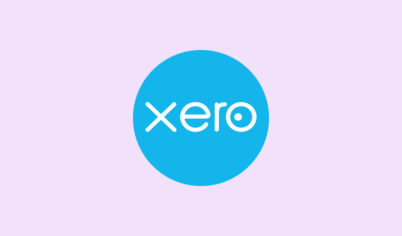3 Steps to Bookkeeping Automation for SaaS Companies

Do you enjoy your bookkeeping? Or does it make you want to rip your hair out? I would wager on the latter. So let’s talk about bookkeeping automation for SaaS companies to help rid you of this pain. My team and I work with a lot of SaaS companies that simply aren’t able to get control over this process. Nine out of ten times it’s because the right tech stack is not being utilized and/or the tech stack is not being operated appropriately.
But fret not, fellow founders, co-founders and SaaS team members, for we are here to help point you in the right direction!
Follow these 3 steps to implementing a tech stack to help you automate your bookkeeping..
Step 1: Choose a cloud accounting app
It’s no secret, nor surprise, that we are going to recommend a cloud accounting app to implement immediately as this is something I’ve been writing about for 4 years now. Simply put, automating your bookkeeping is not possible without it. It’s amazing that I still speak to some tech companies that opt for old out dated desktop accounting software. It boggles my mind.
In our Guide to the Best Accounting Software for SaaS Businesses posted on Techvibes, we provide our preference for our cloud accounting app of choice. At the end of the day, you’ll want to implement a cloud accounting system that has an open API. This is going to allow us to hook up various 3rd party apps to your accounting system to automate many of your accounting processes.
Step 2: Implement an app to manage your subscription billing
SaaS businesses are characterized by having many recurring transactions when it comes to revenues. This part of the bookkeeping process typically throws some accounting firms a curve ball as they are not always in-tune with to how to efficiently and accurately handle this reconciliation process.
Implementing the right subscription billing app that integrates well with your cloud accounting system is key to ensure this process works well, especially for Canadian businesses (for tax purposes). As customers are billed, you’ll ideally want sales invoices to be pushed from your subscription billing app directly into your accounting system, coded appropriately, with the right sales taxes applied depending on where the customer is located.
There are many apps that handle this process, but we are tending to like Chargebee quite a bit at the moment. You can also check the link I posted above to get some more app ideas.
Lastly, many SaaS companies offer their customers the opportunity to purchase an annual subscription instead of a monthly subscription. In this case, you will usually need to report the money received today and defer these revenues over a 12 month period, which can sometimes be quite manual if handling it in Excel. Apps like FlowRev can help automate this process while integrating with your cloud accounting system. It’s a nice touch!
Step 3: Implement apps for expense management
Once again, you can refer to the Guide posted above for examples of apps that I would recommend, but essentially, you will want to find an app to forward all of your expense invoices and receipts to. This will not only render the expense management process paperlessly, but also, if the proper app is selected, will interface with your cloud accounting system so that it can flow seamlessly from your expense management app to your accounting system.
SaaS companies typically have a lot of recurring SaaS expenses of their own. Hubdoc is a great app to automate the retreival of these documents. It can be a real time saver when it comes to gathering all of your expense items.
Is that it?
Well, naturally, I’m biased, and I do believe that while the tools are great, you also need to link up with an accounting/bookkeeping firm that understands the nature of this ecosystem, otherwise, efficiencies will surely be lost, so perhaps this could be looked at as Step 4 of the process to automating your bookkeeping process. I can say, while it has been rare, that we have encountered some businesses that have managed to implement this tech infrastructure almost entirely on their own, though from what I have seen, it did end of taking a significant amount of time, so this is something that you’ll have to consider. If you’re curious, you can check our post on the reasons for why you might want to select working with a cloud accounting firm by clicking here.
Hopefully, this article serves as a good starting point on how you can begin your journey to automating the bookkeeping for your SaaS company!

